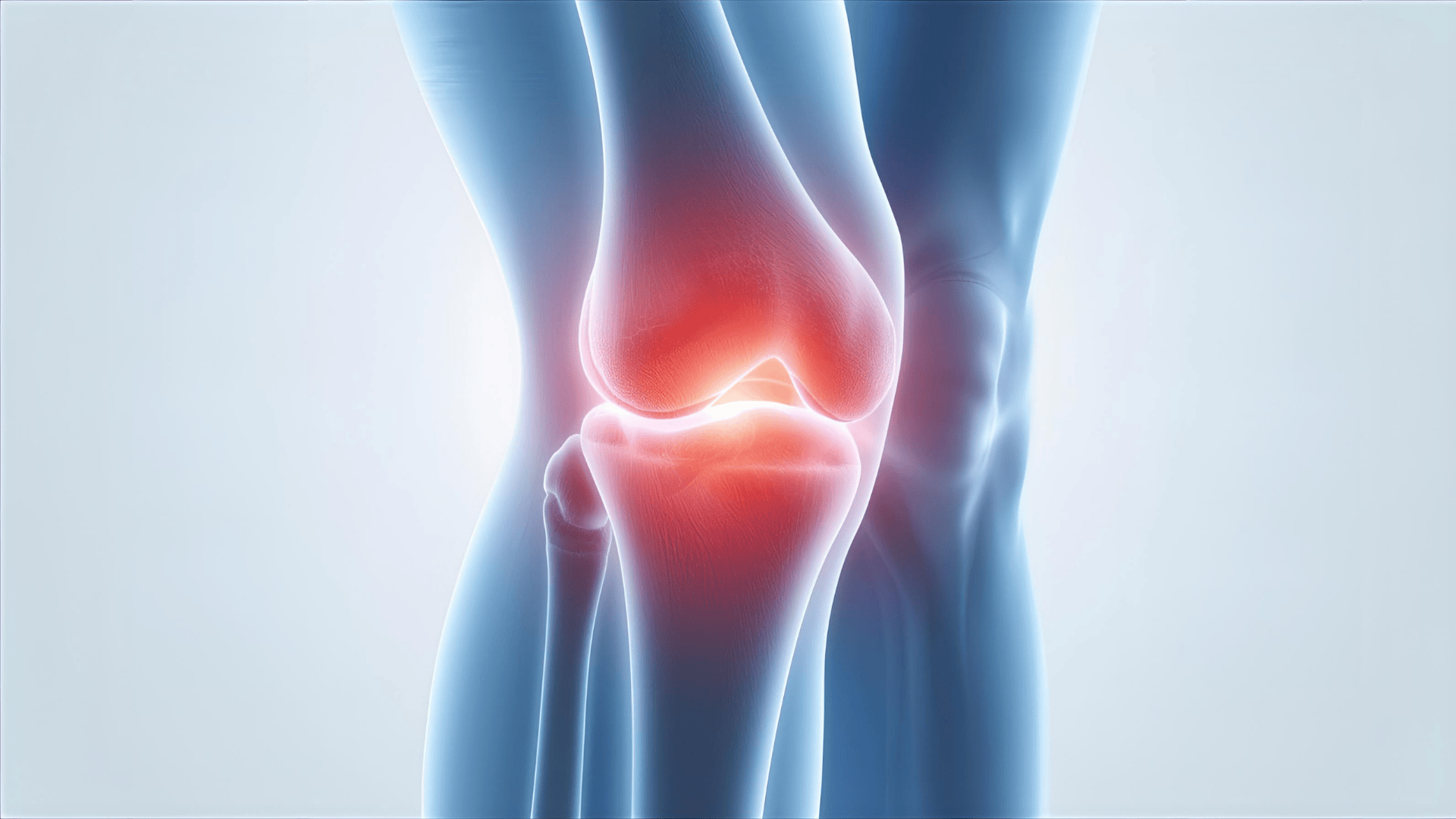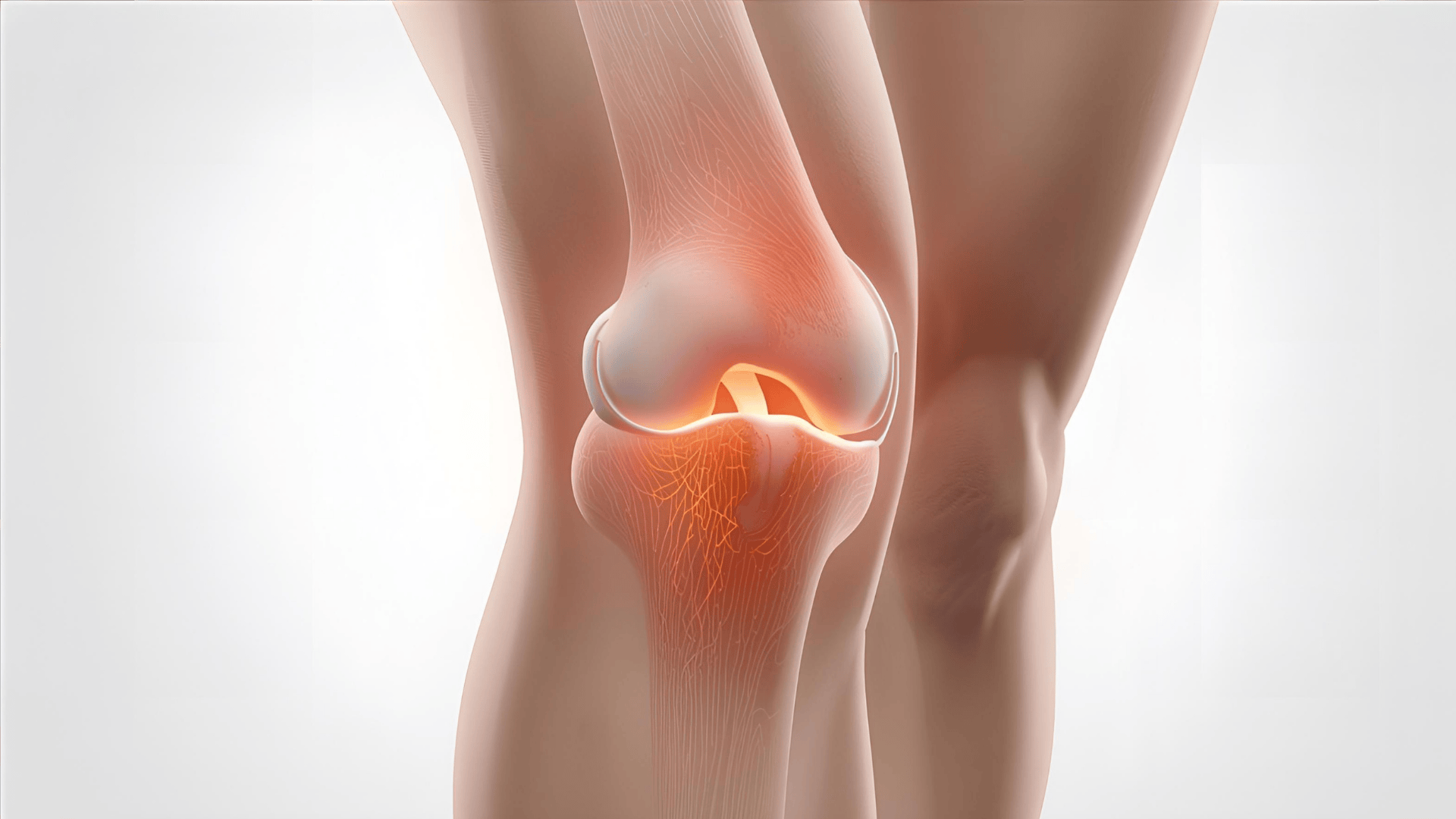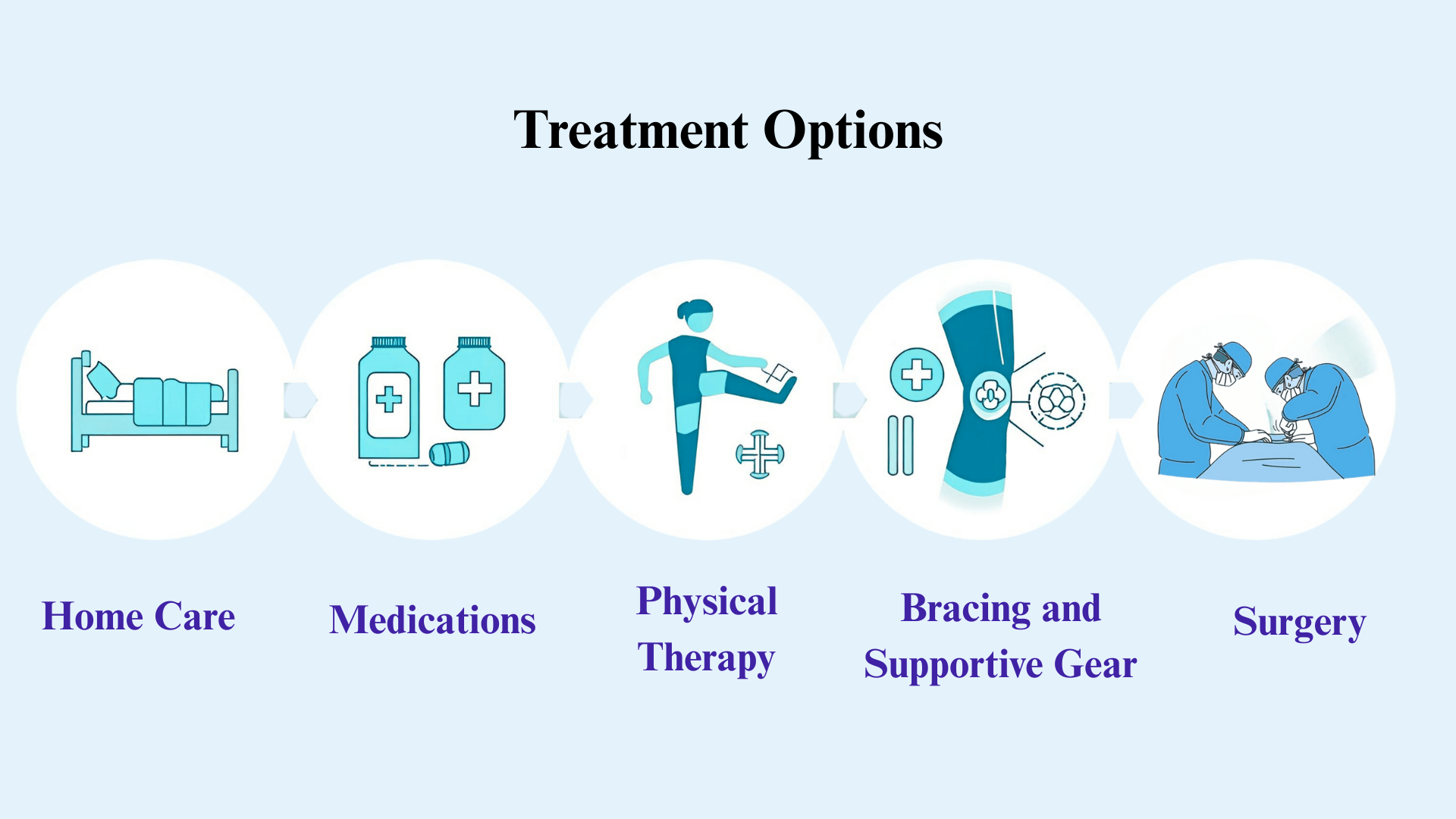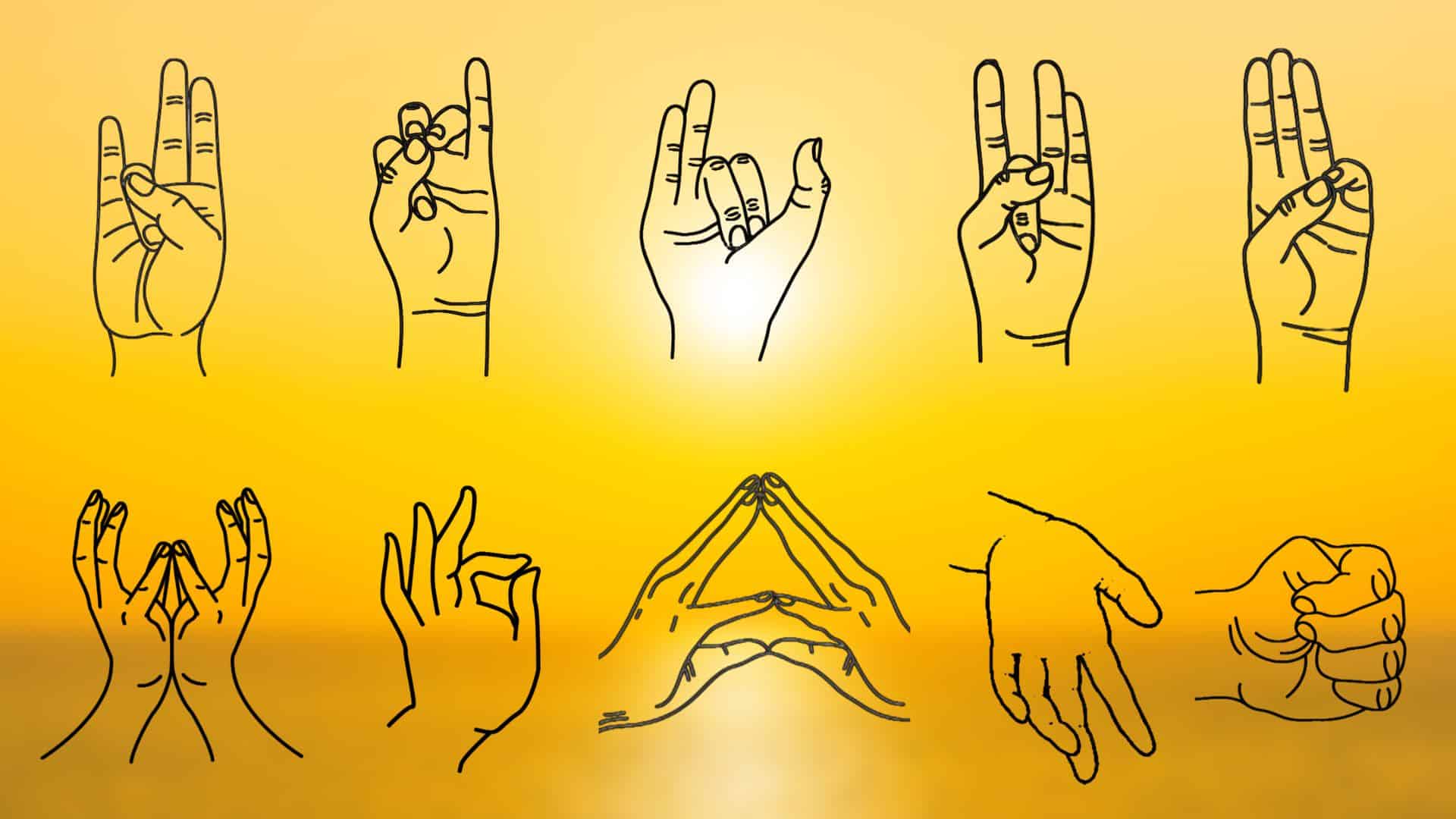That sharp pain shooting through the inside of your knee isn’t something to ignore. MCL sprains happen faster than you think.
One wrong twist during sports, an awkward landing, or a direct hit to your knee can stretch or tear this crucial ligament.
The medial collateral ligament keeps your knee stable, and when it’s damaged, every step becomes a reminder of your injury.
Most people mistakenly believe MCL pain is a minor strain and continue to participate in activities. This mistake often turns a simple two-week recovery into months of chronic instability and pain.
In this guide, you’ll learn what an MCL sprain really is, how to spot the warning signs, what causes these injuries, and the fastest path to full recovery
What is an MCL Sprain?
An MCL sprain happens when the ligament on the inside of your knee gets stretched too far or tears. This ligament helps keep your knee stable during movement.
Unlike ACL tears or meniscus damage, MCL sprains specifically affect the inner knee area. The injury can range from mild stretching to complete tearing of the tissue.
MCL sprains are sorted into three grades:
- Grade I (Mild): The ligament stretches but stays intact.
- Grade II (Moderate): Part of the ligament tears, causing pain and some looseness.
- Grade III (Severe): The ligament tears completely and needs serious care.
Causes of an MCL Injury
The MCL is most often injured during activities that stress the inner knee. Here are the main reasons this injury happens:
- Sports injuries: Contact sports like football and soccer cause sudden twists that damage the ligament.
- Direct impact: Getting hit on the outside of your knee forces it to bend inward unnaturally.
- Awkward landings: Landing wrong after jumping or turning quickly can overstretch the MCL.
- Weak muscles or previous injuries: Poor muscle support around the knee makes the ligament work harder and tear more easily.
Symptoms of an MCL Sprain

Recognizing MCL sprain symptoms early helps prevent further damage. Knowing what to look for can save you from more serious problems down the road. These signs usually appear immediately after the injury occurs or within a few hours.
1. Sharp Pain Along the Inner Side of the Knee
The pain feels like a stabbing or burning sensation. It gets worse when you try to move your leg. You might feel it most when bending or straightening your knee. The pain often starts immediately after the injury happens.
2. Swelling and Tenderness
Your knee puffs up and feels sore to the touch. The swelling usually begins within hours of the injury. The area around the inner knee becomes very sensitive. You may notice your knee looks bigger than normal.
3. Stiffness and Reduced Range of Motion
Your knee feels tight and hard to move normally. Bending and straightening become difficult and painful. You might not be able to fully extend your leg. Morning stiffness is often worse than evening stiffness.
4. A Feeling of the Knee “Giving Out” or Instability
Your knee feels wobbly and unreliable during movement. It might buckle when you try to walk or stand. This happens because the damaged ligament can’t support your knee properly. You may feel like your knee is about to collapse under you.
5. Difficulty Putting Weight on the Leg
Standing or walking on the injured leg causes intense pain. You might find yourself favoring the other leg. Even light pressure can be too much to handle. Climbing stairs becomes nearly impossible without support.
Symptom Severity by Sprain Grade
| Sprain Grade | Pain Level | Swelling/Instability | Mobility Impact |
|---|---|---|---|
| Grade I (Mild) | Mild to moderate | Minimal swelling, stable knee | Slight stiffness |
| Grade II (Moderate) | Noticeable pain | Moderate swelling, some instability | Walking may be painful |
| Grade III (Severe) | Severe pain (sometimes less if the ligament is fully torn) | Significant swelling, unstable knee | Very limited mobility, difficulty standing |
How an MCL Sprain Affects the Knee

The MCL helps stabilize your knee by preventing it from bending inward. When this important ligament gets damaged, your entire knee function changes. Here’s what happens when you have an MCL sprain:
- Reduced knee stability when walking, running, or changing direction: Your knee feels loose and untrustworthy during any movement that requires quick turns or stops.
- Strain on other ligaments like the ACL or meniscus: The damaged MCL forces other parts of your knee to work harder, putting them at risk for injury.
- Difficulty with daily activities, such as climbing stairs or squatting, can occur when simple tasks become painful and challenging because your knee can’t support your body weight properly.
- Long-term risks (if untreated): Ignoring the injury leads to recurring instability, early arthritis, and chronic pain that never fully goes away.
Diagnosing an MCL Injury
If you suspect an MCL sprain, a healthcare provider will check your knee through several steps. Receiving the correct diagnosis helps ensure you receive the proper treatment for your specific injury grade.
- Perform a valgus stress test to check ligament stability: The doctor moves your knee sideways to see how loose the MCL has become.
- Order imaging tests, such as MRI or X-rays, to rule out fractures or other injuries. These scans can reveal whether bones are broken or if other ligaments are also damaged.
- Grade the severity of your sprain to determine the appropriate treatment: The doctor will assess it as Grade I, II, or III to plan your recovery.
Treatment Options for MCL Sprains

MCL sprains can be treated at home for mild cases or require medical care for severe injuries. The right treatment depends on the extent of your ligament damage and your symptoms. Here are the main treatment approaches doctors recommend:
1. Home Care (Rice Method)
Rest your knee by avoiding activities that cause pain. Apply ice for 15-20 minutes every few hours to reduce swelling.
Use compression wraps or elastic bandages to support the joint. Keep your leg elevated above your heart when sitting or lying down to control swelling.
2. Medications and Pain Management
Over-the-counter pain relievers, such as ibuprofen or naproxen, reduce both pain and inflammation. Your doctor may prescribe stronger pain medications for severe sprains.
Anti-inflammatory drugs help speed healing by reducing tissue swelling. Some people also benefit from topical pain creams applied directly to the knee.
3. Physical Therapy and Rehabilitation Exercises
A physical therapist teaches you specific exercises to rebuild strength in your thigh and hip muscles. Range-of-motion exercises help restore normal knee flexibility and prevent stiffness.
Balance training enhances stability and helps prevent future injuries. Most people start gentle exercises within a few days of injury.
4. Bracing and Supportive Gear
Knee braces help maintain your joint in the correct position during the healing process. Elastic sleeves provide compression and warmth to reduce pain. Hinged braces offer more support for moderate to severe sprains. You may need to wear a brace for several weeks or during sports activities.
5. Surgery (for Severe Grade Iii Sprains)
Complete ligament tears sometimes require surgical repair to restore full knee function. The surgeon reattaches the torn ligament to the bone using small anchors or screws.
Recovery from surgery takes 3-6 months with extensive physical therapy. Most Grade III sprains heal without surgery, so doctors only operate when absolutely necessary.
MCL Sprain Recovery & Prevention Tips

Understanding how long it takes for your MCL sprain to heal helps you plan your return to normal activities. Prevention strategies can also help you avoid future knee injuries.
Typical Recovery Time
- Grade I: Most mild sprains heal completely within 1–2 weeks with proper rest and care.
- Grade II: Moderate tears require 3–6 weeks to fully recover before returning to sports or heavy activities.
- Grade III: Severe sprains take 8–12 weeks to heal, or even longer if you need surgery to repair the ligament.
Prevention Tips
- Warm up before sports or workouts: Spend 5-10 minutes doing light movement to prepare your muscles and joints for activity.
- Strengthen thigh and hip muscles for better knee support: Strong quadriceps and hip muscles take pressure off your MCL during movement.
- Wear protective knee braces if you’re at high risk: Athletes in contact sports should use braces designed to prevent knee injuries.
- Avoid sudden twisting movements without proper training: Learn correct techniques for pivoting and changing direction in your sport or activity.
- Maintain proper footwear and playing surfaces: Replace worn-out athletic shoes that don’t provide adequate support and avoid playing on uneven or slippery surfaces.
When to See a Doctor?
You should get medical help right away if your knee shows signs of severe damage that won’t heal on its own.
Warning signs include severe swelling that causes your knee to balloon up quickly, deep purple or black bruising, an inability to put weight on your leg, a loud popping sound when the injury occurred, or ongoing instability even after several days of rest.
These symptoms often mean you have a Grade II or III sprain that needs professional treatment to prevent long-term knee problems.
Conclusion
An MCL sprain can range from a mild stretch to a complete tear, but most injuries heal well with proper care.
The key is recognizing MCL sprain symptoms early and taking the right steps immediately. Grade I sprains recover in weeks with home treatment, while Grade III tears need medical attention and months of rehabilitation.
Don’t let a treatable knee injury turn into chronic pain and instability. Early diagnosis and proper treatment make all the difference in your recovery timeline and long-term knee health.
Do you think you might have an MCL sprain? Schedule an appointment with a sports medicine doctor or orthopedic specialist today.
Your knee will thank you for taking action now, rather than waiting until the damage worsens.







